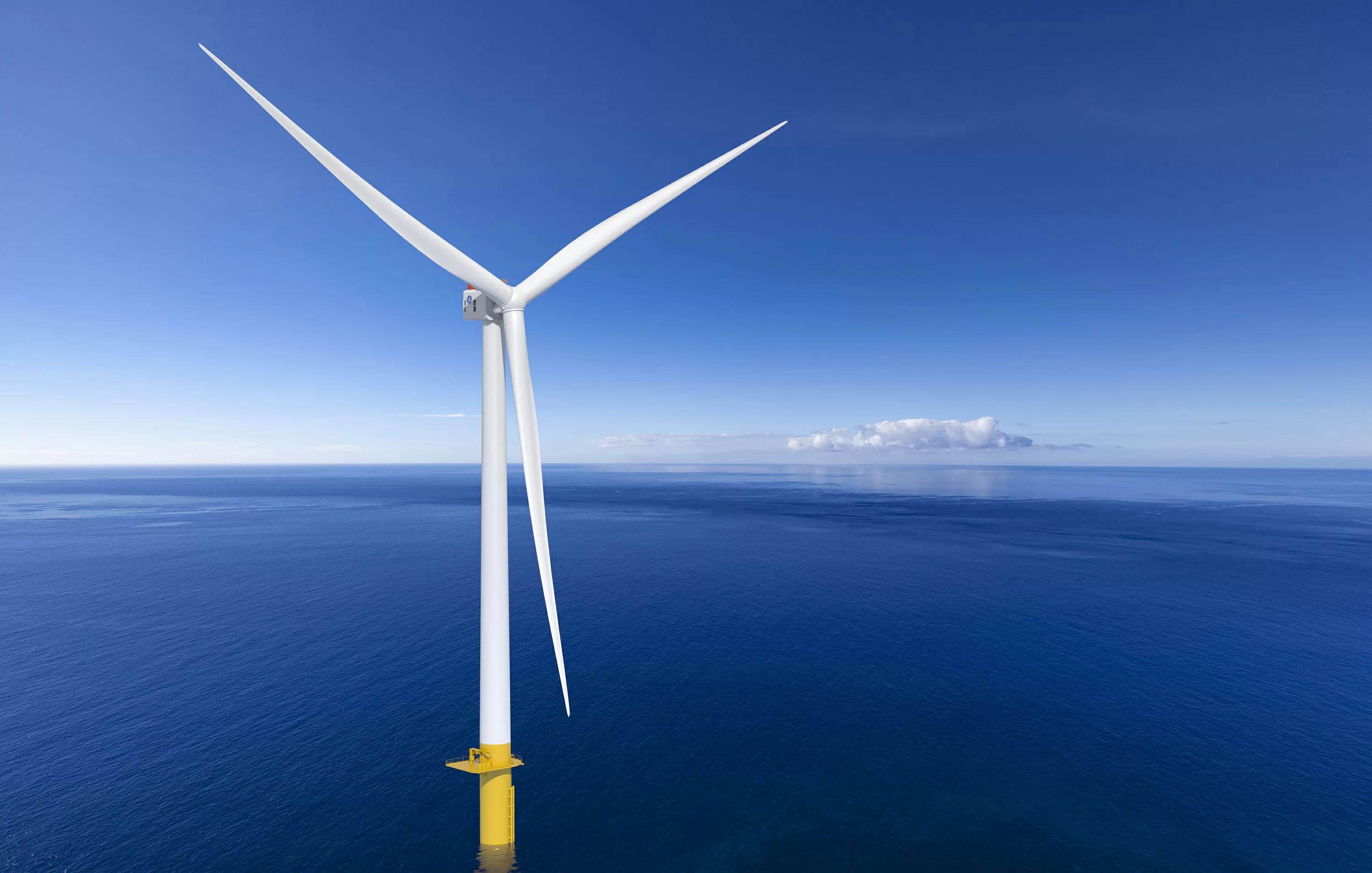The Biden administration aims to accelerate development of offshore wind energy, with a new goal to double planned renewable energy production at sea by 2030, even as the Department of Interior pauses any new leasing for oil and gas.
“The department will immediately begin a review of processes and procedures to date as it reinvests in a rigorous renewable energy program,” according to a statement issued Wednesday as part of President Biden’s latest round of executive orders.
The Jan. 27 announcements on energy policy came two days after developers of the Vineyard Wind project off southern New England announced that they are approaching the Bureau of Ocean Energy Management about resuming the permitting process for the 800-megawatt turbine array.
The developers, a joint venture between Avangrid Renewables and Copenhagen Infrastructure Partners, had asked BOEM to temporarily withdraw their construction and operations plan so it could be updated for using the next generation of larger, more powerful 14-megawatt GE Haliade-X turbines.
Under outgoing Trump administration Interior Secretary David Bernhardt, the agency refused – and citing a written opinion by the top Interior lawyer, warned that Vineyard Wind would need to start its application process from the beginning.
But in a Jan. 20 interview with Reuters, Avangrid Inc. CEO Dennis Arriola said the developers had been maintaining contact with BOEM officials since early December and would move to resubmit the construction and operations plan “very, very soon.”
Vineyard Wind made its announcement Monday.
“We have completed our final review and determined that no changes to the COP are necessary as a consequence of selecting the GE Haliade-X Turbine for the project.” said Vineyard Wind CEO Lars T. Pedersen. “Since there are no changes required to the COP, we expect that BOEM can finalize their review based on the extensive analysis and studies of the project over the last three years.
“We look forward to completing the permitting phase of the project and to finalizing the engineering, contracting and financing of the first utility scale offshore windfarm in the U.S.”
The developers say they are still expecting to reach a financial close in the second half of 2021 and to begin delivering energy under agreement with Massachusetts in 2023.
After the 11th-hour setback to Vineyard Wind in the waning weeks of the Trump administration, offshore wind advocates appear to be getting their wish for a strong reversal under Biden.
“President Biden’s actions today confirm the critical role that offshore wind energy will play in creating a clean U.S. energy grid and achieving White House commitments to combat climate change. His call to double offshore wind production in U.S. federal waters sends a clear signal of support to our industry, which will generate billions in new investments,” said Liz Burdock, president and CEO of the Business Network for Offshore Wind.
“The offshore wind has been on the precipice of significant growth thanks to states’ bold leadership and President Biden’s executive order further pushes the industry to new heights with a new sense of urgency,” said Burdock.
But stopping new offshore oil and gas leasing will affect the overall U.S. maritime industry, and could have the effect of hobbling wind development as well, warned Aaron Smith, president and CEO of the Offshore Marine Service Association.
"While the executive order talks about increasing offshore wind goals, the vessels and mariners necessary to construct tomorrow's wind projects are the same ones harmed by today's moratorium on the oild and gas industry," said Smith. "If this continues, these assets won't be around when the wind industrty grows from a goal to a reality."



.JPG.small.400x400.jpg)

